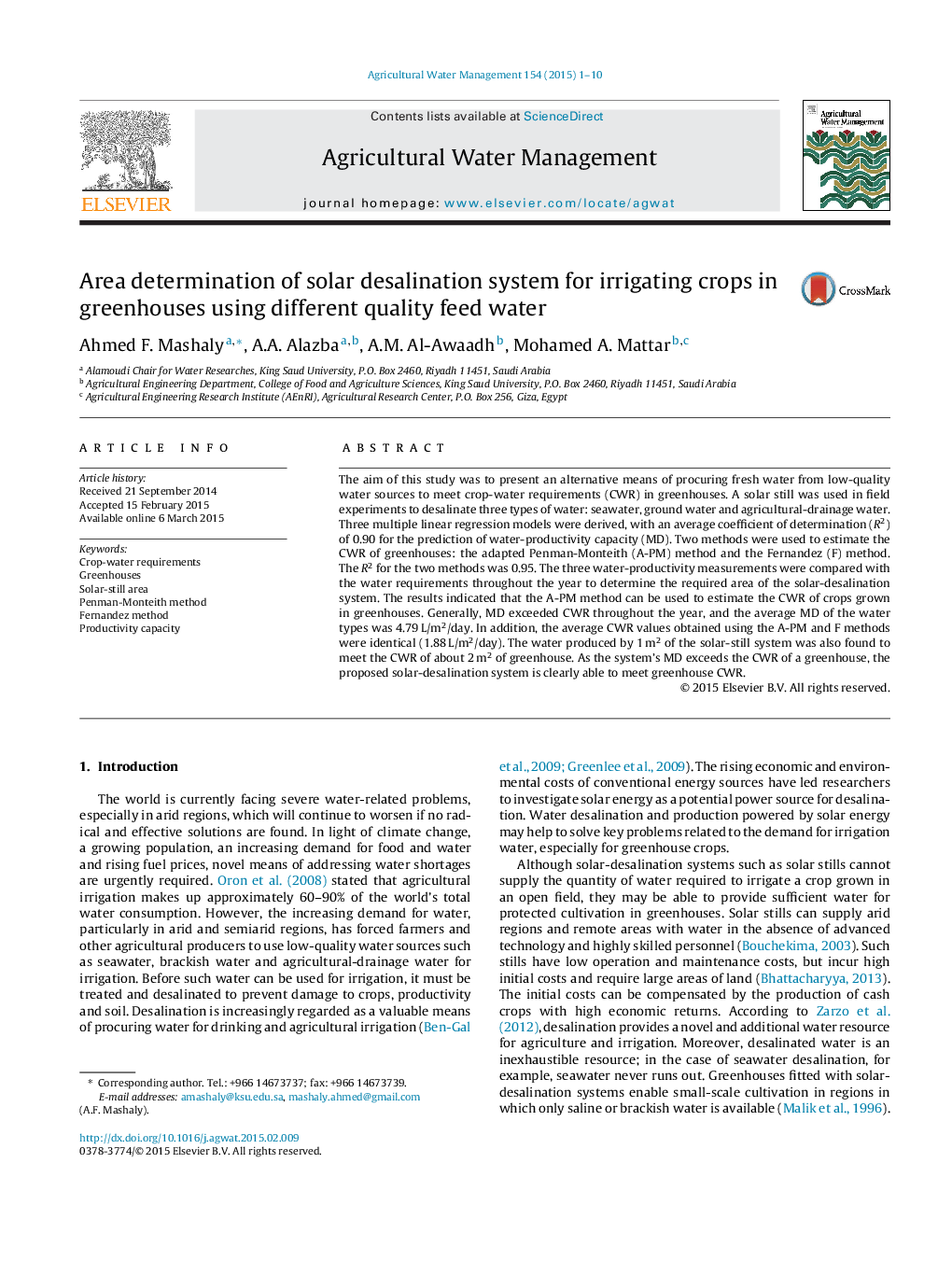| Article ID | Journal | Published Year | Pages | File Type |
|---|---|---|---|---|
| 4478458 | Agricultural Water Management | 2015 | 10 Pages |
•Solar still is employed to produce water.•Different quality feed water is used.•Two methods were used to calculate evapotranspiration.•The water productivity from solar still is greater than crop water requirement.
The aim of this study was to present an alternative means of procuring fresh water from low-quality water sources to meet crop-water requirements (CWR) in greenhouses. A solar still was used in field experiments to desalinate three types of water: seawater, ground water and agricultural-drainage water. Three multiple linear regression models were derived, with an average coefficient of determination (R2) of 0.90 for the prediction of water-productivity capacity (MD). Two methods were used to estimate the CWR of greenhouses: the adapted Penman-Monteith (A-PM) method and the Fernandez (F) method. The R2 for the two methods was 0.95. The three water-productivity measurements were compared with the water requirements throughout the year to determine the required area of the solar-desalination system. The results indicated that the A-PM method can be used to estimate the CWR of crops grown in greenhouses. Generally, MD exceeded CWR throughout the year, and the average MD of the water types was 4.79 L/m2/day. In addition, the average CWR values obtained using the A-PM and F methods were identical (1.88 L/m2/day). The water produced by 1 m2 of the solar-still system was also found to meet the CWR of about 2 m2 of greenhouse. As the system's MD exceeds the CWR of a greenhouse, the proposed solar-desalination system is clearly able to meet greenhouse CWR.
